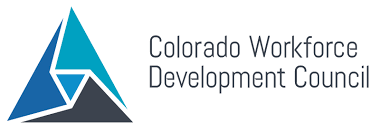The Colorado Workforce Development Council (CWDC) is pleased to release the ninth annual Talent Pipeline Report, which analyzes and explains labor market information, highlights talent development strategies, and provides data-informed opportunities to enhance the talent pipeline in Colorado.
The 2022 Talent Pipeline report identifies:
- Shifts in demand
- Top Jobs – Jobs with projected high net annual openings, above-average growth rates, and a good wage
- Key features of the current labor force
- Strategies to align supply with industry demand
- Opportunities for continued action
To meet the challenges of an evolving economy and the needs of Colorado businesses and Coloradans, the partners of the talent development network must focus on connecting with historically marginalized talent pools, ensuring all learning counts, and enhancing job quality to build a Colorado economy for all.
Key Links:
- Read the full report
- Read the report overview
- Access appendices
- View the launch event recording
- Request a presentation
To sustain the talent needs of Colorado businesses and individuals, more learners and workers must have the opportunity to develop skills and earn credentials or degrees at any stage of life. The talented individuals we need to support our economy are already in their 20s, 30s, 40s, and 50s, many of whom are already in the workforce. Over the coming decade, Colorado’s high school population is projected to plateau and then decline due to falling birth rates.
Colorado has opportunities to close labor market gaps by seeking talent from pools that have historically been marginalized, and attracting workforce populations with quality jobs to bolster in-demand industries. Over the past two years, Colorado has invested nearly $650 million in our state’s talent development and higher education ecosystem. These investments made by the governor and legislature are an opportunity to transform lives for individuals across Colorado.
Over the past 10 years, Colorado has been expanding the ways in which learners and earners can capitalize on educational opportunities that occur outside of the classroom as well as inside. Approaches including credit for prior learning, stackable credentials, and apprenticeships help ensure all learning counts while on the pathway to good jobs.
Too often, when jobs fail to include basic job quality features — such as good wages, safety, benefits, and opportunities for growth — it leads to a cycle of instability among workers that can result in high turnover and declining productivity and exacerbate labor shortages for businesses. Now is the time to also examine the work itself and invest in connecting people with good jobs so businesses and workers win together, with positive impacts for the economy as a whole.
The Colorado Workforce Development Council develops the Talent Pipeline Report in partnership with the Colorado Department of Higher Education, Department of Education, Department of Labor and Employment, Department of Human Services, the Office of Economic Development and International Trade, and the Department of Local Affairs. Thank you to all the partners who contributed to this year’s report.
You can access the Talent Pipeline Report in full, the report overview, and all appendices on the CWDC website.

